
What’s the next frontier of controversy in the world of international horse sport? With the Olympics looming on the calendar, it’s time to prepare for a welfare debate we can all sink our teeth into. Or at least set our jaws around.
The 2010 Alltech FEI World Equestrian Games had their share of controversy, which may be just as memorable as the results. While the victories in all three dressage events by Edward Gal and Totilas of The Netherlands were breathtaking, what made the news and sticks in our memories is the disqualification of Gal’s teammate, Adelinde Cornelissen. She was stopped in the arena by judges who saw a fleck of blood in Parzival’s mouth.
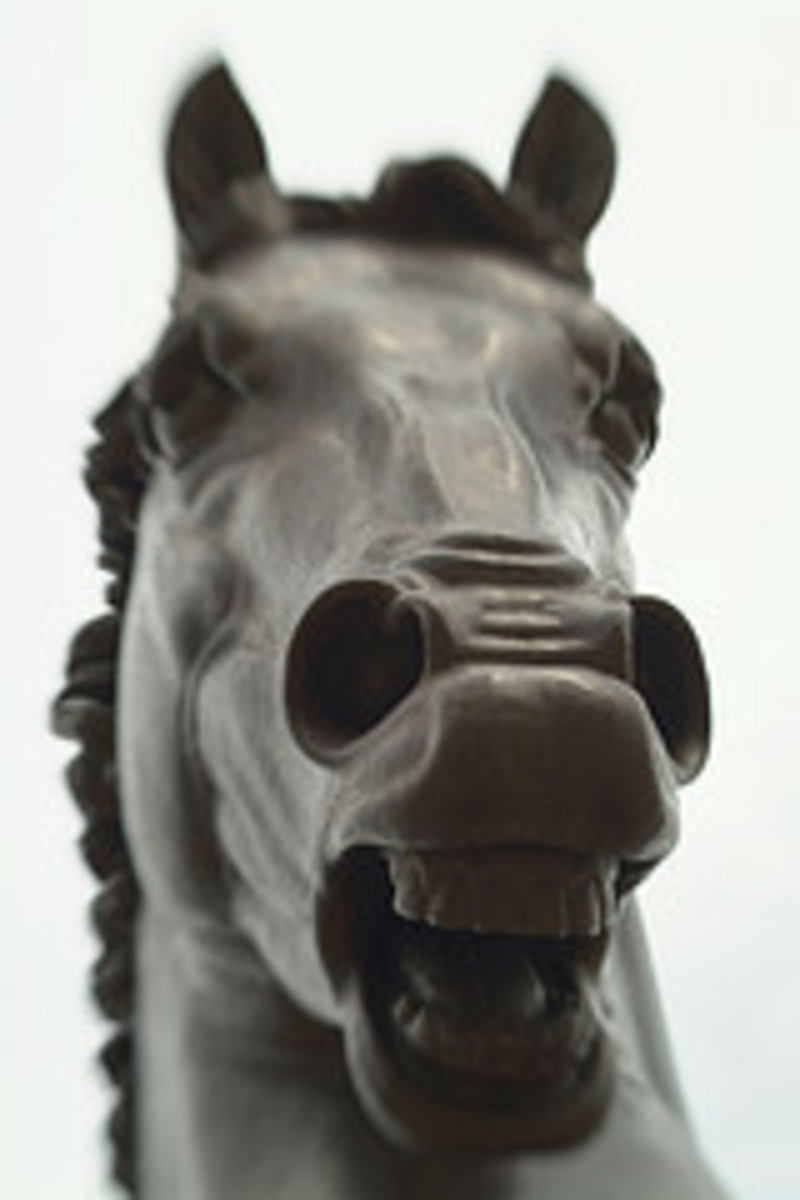
Those Games, which took place less than two years ago, are also memorable because of the way that riders were scrutinized in the warm-up ring. We had just come off the roller coaster of the “blue-tongue dressage” scandal in Europe. Rollkur was the ultimate sin and it would take symposia, research and a lot of rationalizing–including a hair-splitting wordsmithing of terms–to move on from there.
Or have we?
It’s been almost ten years that dressage has been under the edict that its horses should be “happy athletes”. The first line of the FEI’s rules of dressage state “The object of Dressage is the development of the Horse into a happy Athlete through harmonious education.” Elite-level dressage horses are supposed to look happy as they exhibit collection and impulsion and expression and correctness in front of thousands of people and almost as many clicking cameras, often thousands of miles from their homes.
I don’t know how happy quarterback Tom Brady will be during the Super Bowl on Sunday. I think golfer Tiger Woods’ facial expression always looks like an ad for stomach antacids when he’s about to putt. And what about those groaning, gasping tennis players in the silence of Wimbledon? True, they compete by choice. The horses might prefer to stay on the van, but they never do.
Not long ago, horse sports were obsessed with leg boots. Weighted hind boots gave an unfair advantage for jumpers. Front boots might disguise an irritating agent. The FEI had to initiate a thermographic testing protocol to check legs for heat. Are you old enough to remember the rapping (poling) scandal? Rapping jumpers had nothing to do with music.
Not along ago, the sport of dressage enjoyed the enlightenment of advanced diagonal placement. Prospective horse-buyers scrutinized videos of sales horses, ruling out any horse that didn’t overstep with its hind foot. Farriers cringed over that one. Then along came rollkur.
Is it any surprise that the next frontier of horse debate would be the one that so many of us understand the least: the bridle? The controversy centers specifically on the degree of tightness of the noseband, but the problem is probably compounded by the fact that so few people understand the way that bridles are designed, how they are supposed to fit, and why we use the ones we do. That group includes me.
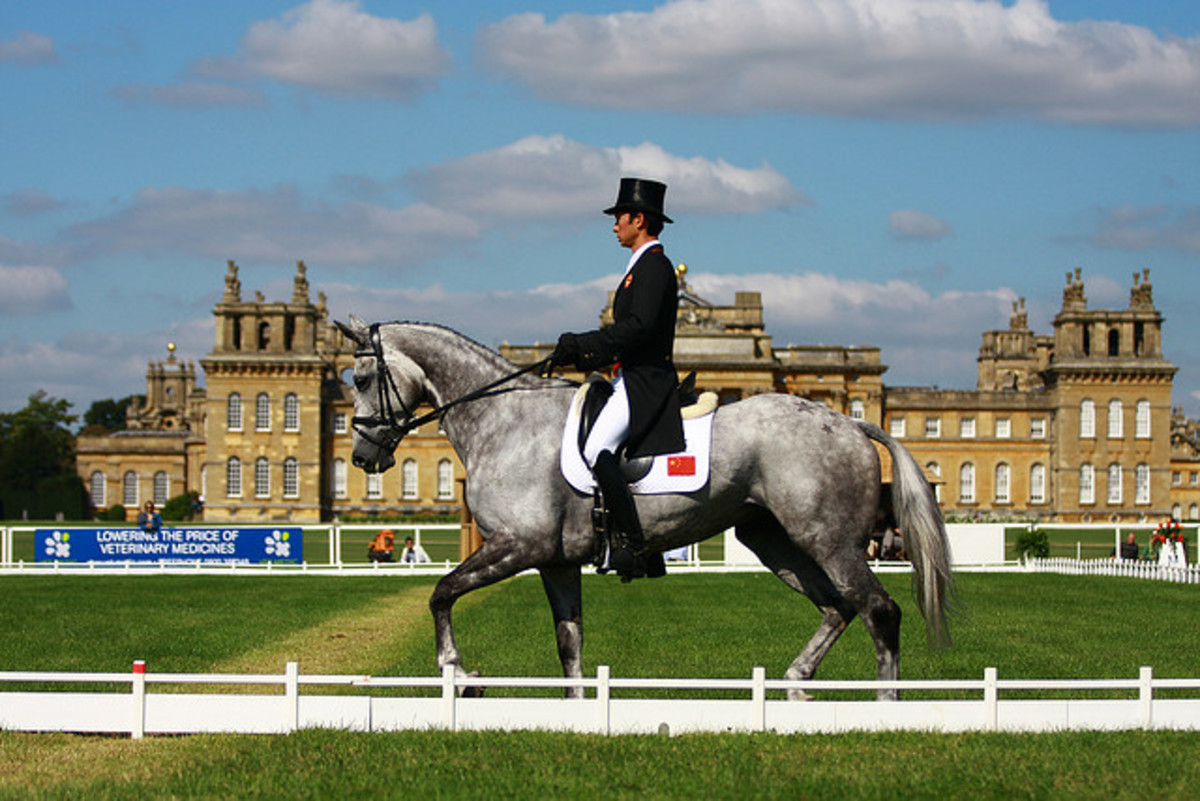
A bridle is like a mechanical organism. It is made up of adjustable parts, some of which are meant to be stable and secure, and some of which are designed to allow some movement. There are lever forces at work and the placement of the bridle on the head and the location and coverage of the noseband (if there is one) vary greater between horses because the size and shape of the head of one horse is not identical to another’s. And that’s even before we get to bit selection.
There’s also the problem of relative head size and shape and markings because of the sheer size of the horse. A warmblood horse in dressage has a much larger head than most other light breeds. The width and thickness of the noseband can give proportion to a head–or detract from it. Noseband placement, thickness and color have strange visual effects on white markings. There is also an element of fashion: we may have simply become accustomed to close-mouthed horses. They are ubiquitous. And imitation of the equipment used by leading riders is standard behavior in the horse world.
I remember watching a rider try to feed her horse an apple once. She turned to me and asked why he wouldn’t take it from her hand. When I pointed out that the horse’s mouth was clamped shut by his bridle, she said, “Oh yeah!” and put the apple in her pocket instead of undoing a buckle and giving him the treat he now knew was there.
Before going any further, it should be stated two things you learned in 4-H or Pony Club: 1. Horses breathe only through their nostrils. They simply cannot breathe through their mouths the way that you can. 2) You should be able to slide two fingers under a noseband after it has been buckled. Many of us are probably riding around on horses with nosebands that are too loose, because this rule was hammered into us and we figure that too loose is better than too tight.

FEI dressage rules state: “A cavesson nose band may never be as tightly fixed so as to harm the Horse.” But they don’t say how tight is too tight, or how harm is defined.
Rumors abound of the practice of “cranking” on padded nosebands of dressage horses, suggesting that a tight noseband gives some advantage in the arena. Today the International Society for Equitation Science (ISES) responded to the controversy with a press release calling for steward inspection of nosebands in all equestrian sports.
Some excerpts from the ISES release:
” The International Society for Equitation Science (ISES) states that the practice of over tightening nosebands to avoid penalties in competition is covering up poor training at the expense of horse welfare. Recent research suggests that horses wearing tight nosebands undergo a physiological stress response, are sensitized to bit pressure and may have reduced blood flow with potential to cause injuries and tissue damage including nasal bone deformities, even when padding accompanies the noseband such as in the case of so-called crank nosebands.
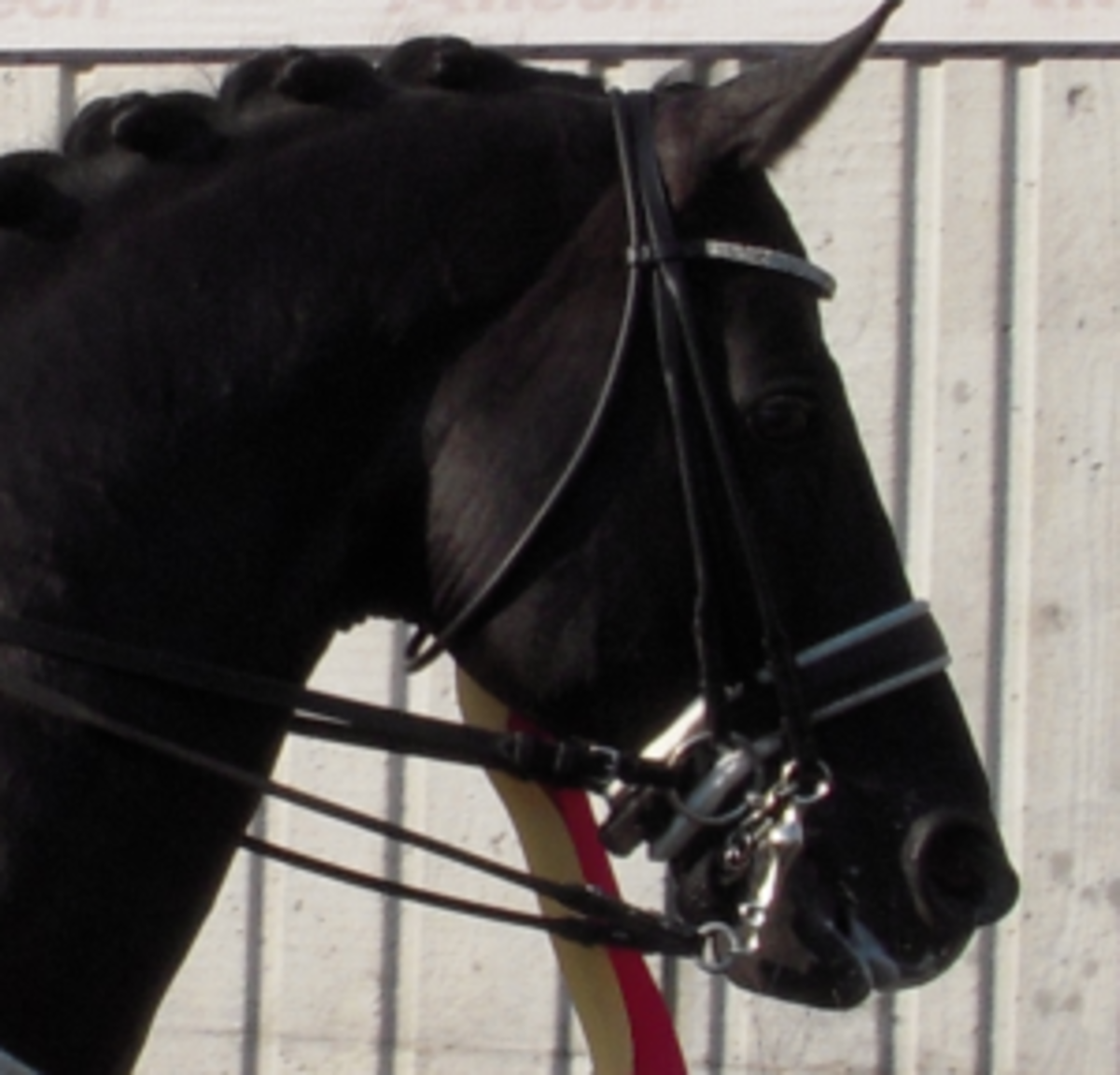
“ISES notes that, in the last few decades, there has been a steady increase in the design of nosebands that effectively mask evidence of a horse’s discomfort. The incentives for athletes to
over-tighten nosebands arise from the rules of dressage that penalize displays of discomfort such as open mouths and lolling tongues. These rules were written by the sport’s governing bodies to
promote excellent training and the demonstration of qualities such as freedom, harmony, lightness and acceptance of the bit without tension…
“ISES recommends:
? a return to the established practice of placing “two fingers” under the noseband to demonstrate that it has not been over-tightened. This amount of space under the noseband allows horses to express tension or seek relief from the pressure of the bit and so aligns with the principles of ethical equitation.
?? that, for fairness and objectivity, a standard taper gauge should be used by stewards at competition. The taper gauge should be placed without force at the nasal midline and be clearly marked to show the desired stop, which, in alignment with established? industry guidance, should be the dimensions of two average adult fingers. In most equestrian disciplines, stewards check that all equipment used on horses complies with the regulations specified for that discipline. With a taper gauge, stewards could ensure that the detrimental effects of over-tightened nosebands could be eliminated or at least lessened.”
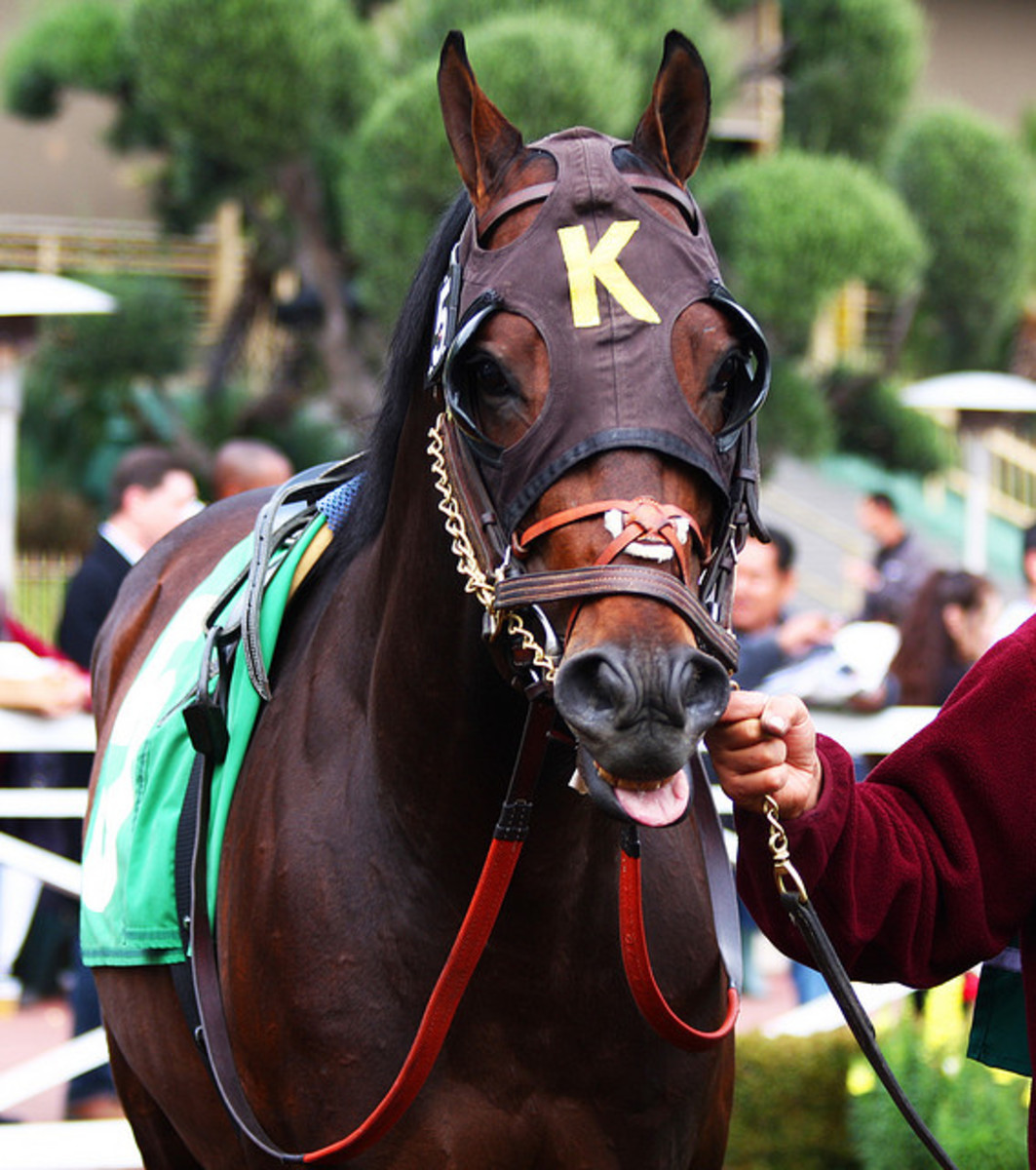
Dressage is not the only sport where bridles are being scrutinized. The rise in popularity of “bitless” bridles is bringing the use of bits into question across the board. There are people who don’t like tongue ties in racing. There are people who don’t like clamped-shut mouths on eventers and jumpers. I don’t know anyone who likes seeing draft horses with tight check reins. Yet ISES? has issued recommendations that take aim only at elite dressage horses.

We do need more research into head carriage, respiration and the overall effects of tack. But we need it for all sports and all breeds of horses, not just dressage. Some day, we may selectively breed or buy equine athletes because they have nostrils of a certain size or shape, the way that we look for shoulder or croup angles today. Is a narrow muzzle an advantage or a disadvantage?
Perhaps this latest publicity will splash over into other sports and some new information will come forward that will benefit all horses, not just the most elite. In the meantime, it is the elite dressage horses that are setting the example that others follow and they will be under the spotlight–maybe even the microscope–at London this summer during the Olympics.
The prospects of Olympic dressage brings to mind one of the most common sights at a horse show: a helpful mom shouting from the sidelines to a petrified child entering the show ring, “SMILE! LOOK HAPPY!”
If it’s a dressage show, we might wonder if she’s speaking to the rider or the horse. In either case, looking like a happy athlete is much more easily said than done.
To learn more: Read the abstract of the paper? “The effect of double bridles and jaw-clamping crank nosebands on temperature of eyes and facial skin of horses” in the Journal of Veterinary Behavior by Professor Paul McGreevy et al, published online last week.
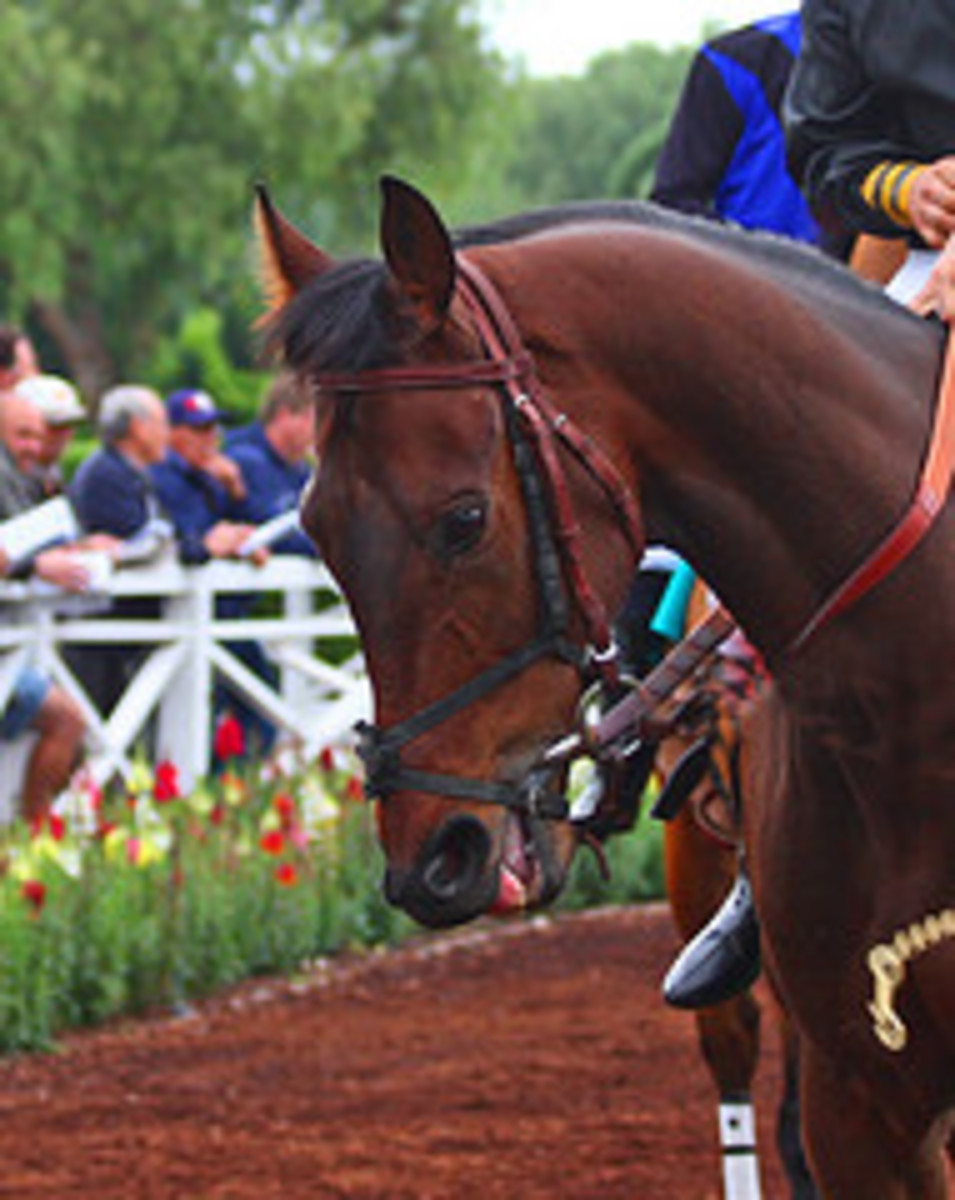
The International Society for Equitation Science (ISES) describes itself as “a not-for-profit organization that aims to facilitate research into the training of horses to enhance horse welfare and improve the horse-rider relationship”. Read more about them at www.equitationscience.com
Read the full International Society for Equitation Science position statement on bridle nosebands (cavessons).
Read about tack-related research at Michigan State University’s MacPhail Center for Equine Performance under the direction of Dr. Hilary Clayton.
Plan to attend the Saddle Research Trust’s 2012 conference on “Bringing Science to Saddles” in Cambridge, England next month.
——-
Photo of Adelinde and Parzival by Stefan Sager. Da Vinci horse by Lincolnblues. Alex Hua Tian and Magenta by NobleHua. Racehorses at Santa Anita by Rennett Stowe. Totilas ? by Fran Jurga. Jumper by Claudio Gennari.








